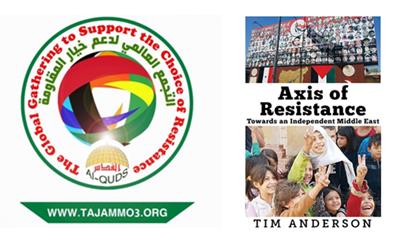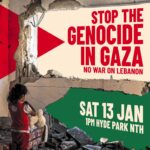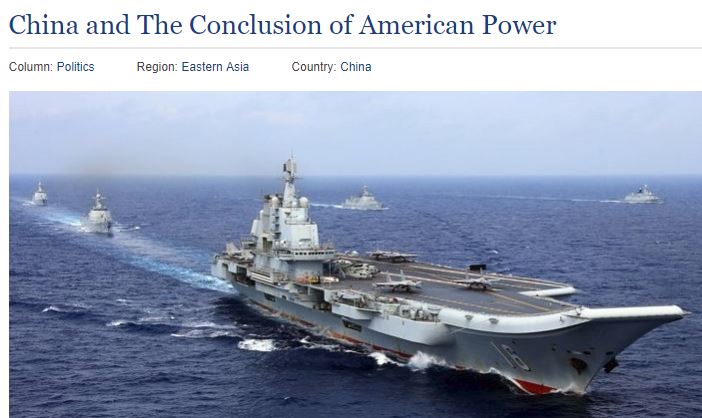A backgrounder by the Global Gathering to Support the Choice of Resistance (Australia)
Many people support the Palestinian struggle but some, particularly in western countries, may not appreciate the central role of Resistance and of the Regional Resistance. Hence this brief backgrounder.
The Palestinian struggle is famous for its resilience over many decades, but the Palestinian people only survive today because they have resisted. First they have remained on their lands; but to sustain this they have had to resist physically, including with armed struggle. International law recognises the right of an occupied people to armed struggle. What else would they do? Lie down and die?
The Palestinian resistance
All Palestinian resistance factions have relied heavily on regional states and forces for material support and training, in particular Iran, Syria and Lebanon’s Hezbollah. Those three pursue a common policy of support for ALL ten factions of the Palestinian resistance: nationalist, leftist and Islamist groups, the largest of which are the militias of Hamas, Palestinian Islamic Jihad and the PFLP. All Palestinian resistance groups opposed the PLO’s Oslo Accords (1993-1995) and recognition of ‘Israel’, and all are branded ‘terrorist’ groups by the USA.
However the right of occupied peoples to resist is well recognised in international law. In 1974, “resolution 3314 of the UNGA prohibited states from “any military occupation, however temporary”, while “wars of national liberation” were embraced through Additional Protocol I to the Geneva Conventions of 1949, “as a protected and essential right of occupied people everywhere”. In December 1982 UNGA resolution 37/43 reaffirmed “the legitimacy of the struggle of peoples for independence, territorial integrity, national unity and liberation from colonial and foreign domination and foreign occupation by all available means, including armed struggle” (Cohen 2017).
US Wars for a ‘New Middle East’
It is not possible to understand current ‘Middle East’ conflict, with Palestine at its centre, without observing the ambition, stated by Washington in 2006, of creating a “New Middle East” (NME). This project began with the three invasions of Afghanistan (2001), Iraq (2003) and Lebanon (by Israel in 2006). Then followed hybrid wars against Libya, Syria, Iraq and Yemen. For these wars Washington, through its regional allies, created and supplied various proxy terrorist groups such as Jabhat al Nusra (HTS) and ISIS. The overall aim of the NME wars was to create a region of “freedom and democracy” centered around key US agents Israel and Saudi Arabia and, at the same time, excluding major US rivals: Russia, China and Iran. This imperial plan failed and an ‘Axis of Resistance’, led by Iran, grew to oppose it.
The role of Iran
The main reason for constant US and Israeli hatred of Iran has nothing to do with the various stated pretexts, but rather because Iran, since the Islamic Revolution of 1979, has maintained a strong independent policy, supporting the Palestinian resistance, Hezbollah in Lebanon and independent states in Syria, Iraq and Yemen. Iranian Commander Soleimani (murdered by Trump in 2020) became a regional hero precisely because he led the regional destruction of ISIS while backing Palestinian, Lebanese, Syria and Iraqi resistance to US domination.
The Lebanese Resistance, Hezbollah
Hezbollah was formed in 1983 mostly to defend Lebanon from the constant Israeli invasions. This non-sectarian Islamic resistance group, with support from Iran and Syria, drove the Israelis out of Lebanon in 2000 and again in 2006. They possess a massive arsenal of weapons and help train all the Palestinian resistance factions. From October 2023 onwards they opened a northern front to degrade the Israeli military and divert it from Gaza. Hezbollah operations have cleared most of the Israeli colonists from northern Palestine.
Syria – the key link
The dirty war on Syria, a long proxy war followed by a triple occupation (Israeli, Turkish and US American), is wrongly called a “civil war” by Wikipedia. It was nothing of the sort, but rather a US hybrid war designed to smash the key link between Iran and the Palestinian and Lebanese Resistance. The constant Israeli missile attacks on Syria aim at destabilising Syria and preventing the formation of a strong Iranian-led alliance on the borders of occupied Palestine. After 2018 the remnants of the Syrian armed ‘opposition’, including media group ‘The White Helmets’, ended up taking refuge with the Israelis. These days sectarian terrorism only persists in Syria in the safe havens provided by the Israeli, Turkish and US occupation.
Yemen
With Yemen declaring war on the Israelis, by blocking Red Sea shipping supply to the genocidal regime, the impoverished country has become the most recent member of the ‘Axis of Resistance’. In early 2015 an Ansarallah (‘Houthi’) led coalition took control of 70% of the populated areas of Yemen, sparking a reaction by the US and some Arab monarchies (the UAE and the Saudis), who began a long proxy war against the National Salvation Government (NSG). The Yemeni Revolution (2011-2015) was the only successful revolution of so so-called Arab Spring but it was not recognised by the UN Security Council. Instead, they declared Mansour Hadi (an interim president in 2012) as perpetual “President” (even though Hadi fled to Saudi Arabia in early 2015) while declaring Ansarallah and the NSG as “Houthi rebels”, who were “a threat to regional peace”. The subsequent siege and “world’s worst humanitarian crisis” in Yemen was largely due to UNSC endorsement of the siege against the effective government (and most of the people) of Yemen. In 2024 Yemen came under direct attack from the same US-UK alliance which seeks to perpetuate the genocide in Gaza.
Iraq – smashed and divided
After the 2003 invasion an Iraqi state was reformed under US tutelage, slowly regaining some autonomy (e.g. coordinating with Iran and Syria), but the state remains weak and divided. Its Popular Mobilisation Forces, central to crushing ISIS, have in recent months attacked US bases in Iraq and Syria as also some Israeli bases in occupied Palestine. Iraq has been trying to expel the US occupation since Trump’s murder of Soleimani and Muhandis in January 2000.
Reference
Cohen, Stanley (2017) ‘Palestinians have a legal right to armed struggle’, Al Jazeera, 20 July, online: https://www.aljazeera.com/opinions/2017/7/20/palestinians-have-a-legal-right-to-armed-struggle
Produced by:
Global Gathering to Support the Choice of Resistance (Australia) Site: https://counter-hegemonic-studies.site/tajammo-1/





